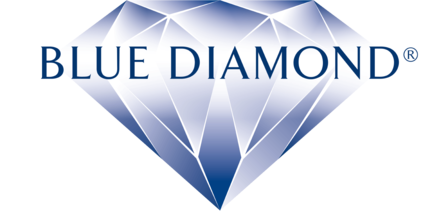Aim to plant a good mix of pollinator plants
Aim to plant a good mix of pollinator/bee friendly/insect attracting plants
Open, single flowering plants are easiest for the bees to access, particularly those with daisy shaped flowers.
Double flowers can be difficult for bees to access and the rewards or nectar can be less.
Tubular flowers are also recommended as they are a good food source for bumblebees and during the winter Gorse, winter flowering Honeysuckle, Clematis and Hellebores can give bees a food source on warmer days.
Purple flowers are the easiest colour for bees to see, they also prefer white, yellow and blue flowers.
Aim to have a good mix of plants to provide nectar, pollen, berries and seeds, shelter for nesting and leaves for caterpillars’ food.
A mix of native and non-native plants is ideal.
Look out for Iberis, Veronica, Phlox, Astrantia, Cirsium, Achillea, Nepeta, Geum, Pulmonaria and Delphinium.
Dandelions can be an important early flower source for bees. If you can leave the flowers and deadhead when they have gone over it will assist the bees greatly.
Bee Friendly Plants - Look out for the bee logo on many of our plants in Blue Diamond Garden Centres.

Early Season
Bluebell (Hyacinthoides)
Bugle (Ajuga reptans)
Aubrieta (Aubrieta deltoidea)
Japanese Quince (Chaenomeles)
Crab apple (Malus)
Crocus (saffron crocus)
Flowering Cherry and Currants and also fruit trees
Forget-me-not (Myosotis)
Hawthorn (Crataegus)
Primrose (Primula)
Lungwort (Pulmonaria)
Azalea (Rhododendron)
Rosemary (Salvia rosmarinus)
Late Spring - Early Summer
Allium
Borage (Borago officinalis)
Bellflower (Campanula)
Quamash (Camassia)
Comfrey (Symphytum)
Cornflower/Knapweed (Centaurea)
Larkspur (Delphinium)
Lanceleaf Tickseed (Coreopsis)
Foxgloves (Digitalis)
Hardy Geranium (Geranium bohemicum)
Honesty (Lunaria annua)
Hollyhock (Alcea)
Catnip (Nepeta)
Honeysuckle (Lonicera)
Lavender (Lavandula)
Jacob's Ladder (Polemonium)
Cinquefoils (Potentilla)
Scarlet Firethorn (Pyracantha)
Snapdragons (Antirrhinum)
Sage (Salvia)
Hedgenettle (Stachys)
Teasel (Dipsacus)
Thyme (Thymus vulgaris)
Mullein (Verbascum)
Brazilian Vervain (Verbena bonariensis)
Summer
Michaelmas daisy (Aster)
Marigold (Calendula)
Buddleja
Cardoon/Globe Artichoke (Cynara cardunculus)
Dahlia
Sea Holly (Eryngium)
Echinops Globe Thistle
Coneflower (Echinacea)
Heather (Calluna vulgaris)
Ivy (Hedera)
Beardtongue (Penstemon)
Black-eyed Susan (Rudbeckia)
Sage (Salvia)
Scabious (Scabiosa caucasica)
Stonecrop (Sedum)
Flowering herbs such as Lavender are a great addition.
Other insect attracting plants
Butterflies are especially attracted to;
Buddleja
Cornflower (Centaurea)
Boneset (Eupatorium)
Honeysuckle (Lonicera)
Marjoram/Oregano (Origanum majorana)
Lavender (Lavandula)
Privet (Ligustrum)
Ivy (particularly for egg laying) (Hedera)
Scabious (Scabiosa caucasica)
Wallflower (Erysimum)
Red Valerian (Centranthus ruber)
Common vervain (Verbena)
Stonecrop (Sedum)
Hebe (Veronica speciosa)
Wildlife Friendly Hanging Basket/Tubs
Million Bells/Trailing Petunia (Calibrachoa)
Beggarticks (Bidens)
Lobelia (Lobelia erinus)
Heliotrope (Heliotropium arborescens)
Common vervain (Verbena)
Twinspur (Diascia)
Moth attracting plants
Yarrow (Achillea)
Leatherflower (Clematis)
Flowering Currant (Ribes)
Foxgloves (Digitalis)
Mallow (Malva)
Mint (Mentha piperita)
Nettle (Urtica dioica)
Flowering Tobacco (Nicotiana alata)
Jasmine (Jasminum)
Honeysuckle (Lonicera)
Sweet Rocket (Hesperis matronalis)
Ivy (Hedera)
Michaelmas Daisy (Aster)
Stonecrop (Sedum)
Campion (Silene)
